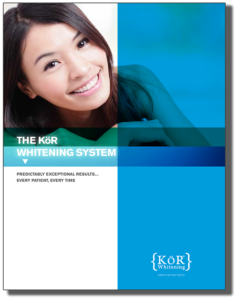
15 free sample trays – we’ll even pay for shipping within the USA
7 USA & International Patents
27 Distinctive Features
Features 1-6: Why no adhesive is needed (Adhesive is Contraindicated)
1
LOCKING HOLES
As you see here, all holes in the BioShape trays have step-locks to LOCK the impression material in place. Compare this to the typical impression trays shown below.


2
VARIED HOLE DESIGN FOR GREATER LOCK-IN
The hole sizes, shapes & angulations vary, to facilitate locking the impression material securely in place. Most other impression trays do not.


3
HOLES CLOSE TO ALL FLANGE EDGES
Dr. Kurthy placed holes only 1.5mm from all of the edges of the trays to securely lock the vestibular extensions of impression material in place.

4
FULL HOLE PATTERN IN ANTERIOR OF TRAYS
Most trays have very few, or no, holes in the facial & lingual anterior areas. The reason is that injection molding trays with holes in these areas is more difficult & more costly. The BioShape trays have full hole patterns in these areas.
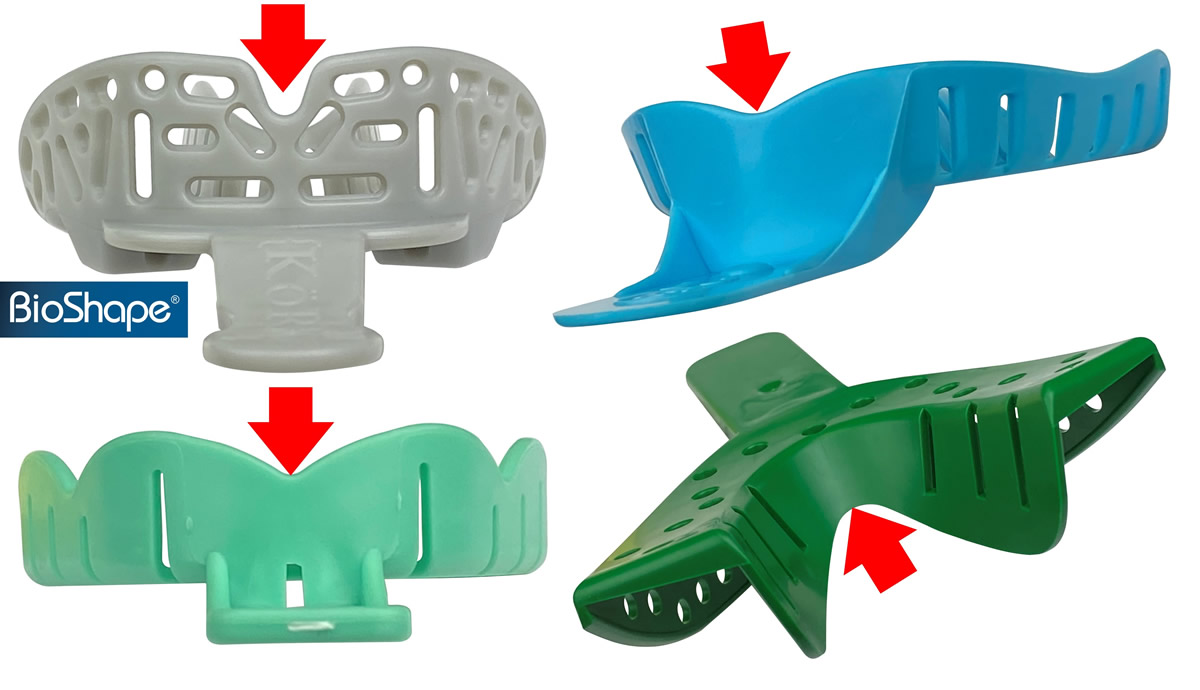
5
FULL HOLE PATTERN IN LINGUAL FLANGES
Injection molding trays with holes on the lingual flanges is also difficult and costly, so, many other trays have few or no holes on the lingual flanges at all. But the BioShape trays have step-locking holes everywhere on the lingual flanges.

6
SHARP CONES TO PREVENT MICROMOVEMENT
Dr. Kurthy also placed hundreds of tiny, pointed cone shapes on the occlusal surfaces to further prevent micromovement of the impression material.

Features 7-8: Extreme Rigidity
With plastic trays, dentists are always concerned about flexibility. If your tray flexes – at all – during the impression, when you remove the impression from the mouth, the flexed trays will rebound, causing distortion. And you can’t tell just by looking. So, the following features create the extreme rigidity that we want.
7
EXTREMELY RIGID PLASTIC
The BioShape trays are made of PolyRIGIDiene™, which is our KöR® proprietary blend terpolymer. It is made of 3 different monomers & two inert coloring agents. PolyRIGIDiene provides a balance of exceptional hardness, toughness, tensile strength & flexural strength. It’s an amorphous isotropic polymer, which provides equal rigidity regardless of direction of force, making it highly resistant to both torsion (twisting) & flexing under load. This results in ultimate rigidity & stability of the BioShape trays. It’s thermoplastic, enabling customization of the trays when needed. And it is BPA-free.

8
THICKER TRAY MATERIAL
BioShape trays are thicker than trays you’ve used before, which results in even greater rigidity. As you see here, the facial & lingual flanges of the grey BioShape trays are 20 or more percent thicker than other typical impression trays.

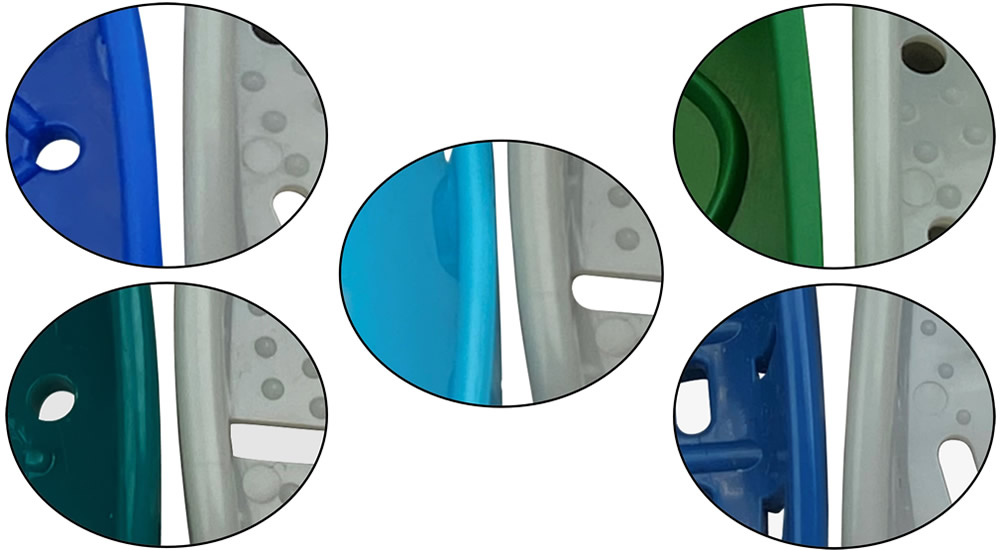

At the posterior occlusal of the trays, you see the thickness, which is already 20% thicker. But the incisal & occlusal areas of the trays, back to 1st molars, vary from double to triple thickness.

As you see here, this is the central core of the trays, & is the location most responsible for cross-arch rigidity of trays.

Features 9-27: The Physics, Mechanical and Anatomic Design of the Trays that Results in Easier & Better Impressions, and Increased Patient Comfort.
9
BITE RAMPS
Depending on your impression technique, you may or may not utilize these Bite Ramps. There are 2 situations where you may use these Bite Ramps. The first would be with Putty Impressions.

Trying to fully seat a putty impression by hand is difficult. But when having the patient BITE the putty impression to place, the centrally located and properly angled BITE RAMPs very easily seat the putty impression fully & evenly without impinging on the posterior soft tissues.

Also, when biting on the impression tray, the patient’s mouth is much more closed, with far less pull on vestibular extensions – resulting in impression material extending more deeply into vestibules. That will create greater hydraulic pressure on the second step wash impression for an exceptionally sharp, detailed wash impression.
The second way to use the Bite Ramps is with alginate, or alginate substitute, impressions. You already know that alginate impressions are best held by hand as the alginate sets. But in the real world, many assistants seat the alginate impressions & ask the patient to bite on the impression tray to keep the impression in place as it sets. Assistants frequently place cotton rolls over the impression trays to have the patients bite on.
With BioShape trays, after seating the alginate impression, the patient simply bites down on the Bite Ramps to hold the impression in place.

10
CURVED-IN POSTERIOR PALATE
Dr. Kurthy designed the posterior palate area curved in to reduce patient gagging. Compare that to most other impression trays.

11
ANATOMICALLY SHAPED POSTERIOR FLANGES
The upper posterior flanges of the BioShape trays slope according to the most common vestibular oral anatomy. Compare this anatomic shape to other typical trays. BioShape posterior flanges are high enough to more thoroughly capture teeth & soft tissues, yet do not impinge on the depth of the vestibule.

12
HIGHER PALATE
Dr. Kurthy designed these trays with a higher palate. And notice that the sides of the palate area are almost vertical, which forces impression material laterally into the lingual embrasures. Most other trays have a rather low palate area, so there is no physical structure in the palate area to push impression material laterally into the lingual embrasures of the teeth.

13
CURVE OF SPEE
Unlike most impression trays, the distal half of lower BioShape trays flares upward to follow the Curve of Spee, preventing the posterior edge of the tray from impinging on the posterior soft tissue retromolar pad.

14
LONGER/HIGHER FLANGES
Dr. Kurthy designed the flanges of the trays to have greater length (height), especially in the anterior, which results in greater extension of impression material into vestibules, & therefore greater hydraulic pressure on the impression material around the teeth for a more detailed impression, & less chance of bubbles, voids or pulls in the impression. As you see, other typical trays have much shorter flanges, and create far less hydraulic pressure.

15
SLIGHTLY WIDER TRAYS
The overall width of the trays is slightly wider to accommodate more patients without having to reach for a larger size tray.

16
GREATER LIP CONTROL DURING IMPRESSIONS
The handles are in a more coronal direction to give you more and easier, access & freedom to control the patient’s lips while taking the impression. Compare this to most other impression trays.
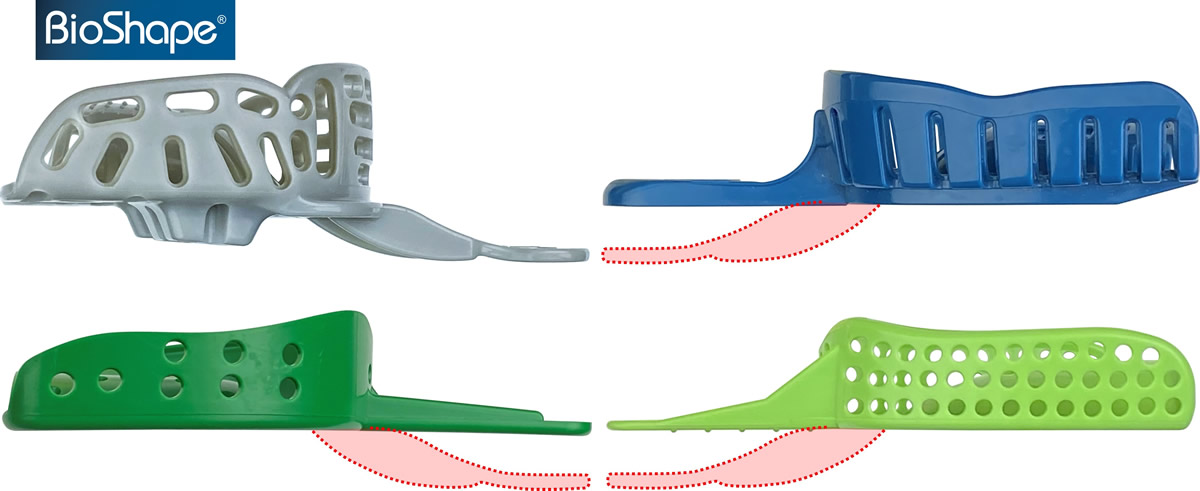
17
ANATOMICALLY DESIGNED BICUSPID AREA
The sides of the trays in the bicuspid areas are anatomically designed to be wider & more rounded, to accommodate a more rounded arch form. Compare this to the shapes of most other impression trays. This makes impressions easier for both operator & patient. This also gives more of an easier, universal fit “feel” when taking impressions.
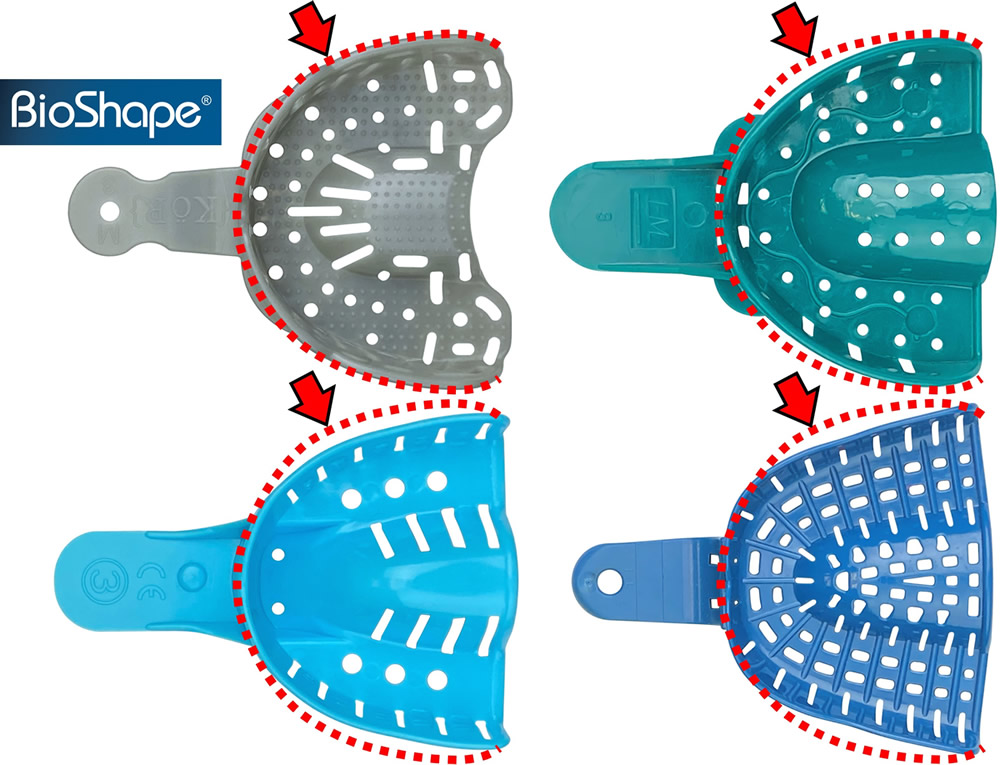
18
ANATOMICALLY DESIGNED ANTERIOR FLANGES
As you can see here, the anterior flanges of BioShape trays are more anatomically designed. They’re curved slightly inward, facilitating better fit of the anterior vestibule & easier placement of the impression tray under the lips without catching the patient’s lips. Compare this to other typical impression trays.

19
NARROWER LINGUAL SPACE
By having a narrower lingual design, this accommodates narrow arches & patients with bulbous lingual gingival contours. As we all know, when we take lower impressions, we ask the patient to raise their tongue – so the tongue easily fits within the space.

20
INCREASED FRENUM ROOM
Dr. Kurthy made the anterior frenum areas deeper, wider & rounded. As you know, it’s not uncommon to find a frenum that is not exactly in the midline. And some frenums are more prominent than others. By allowing more room for each frenum, it’s more comfortable for the patient, & we get a more accurate impression of the frenum areas.

21
EXTENDED 3RD MOLAR AREAS
The occlusal areas of the upper trays have been extended posteriorly to better cover any third molars without impinging on the posterior buccal vestibule.

22
FLATTER ANTERIOR SEGMENT
Many trays have a very narrow anterior segment design. Dr. Kurthy made the anterior segment wider to accommodate patients with wider, flatter anterior arches.

23
NARROW ARCH SIZE TRAYS
As you know, every once-in-a-while, patients have unusually narrow arches. And it can be tough to get an impression without missing those terminal molars.
So, Dr. Kurthy also created a narrow version of the upper trays.
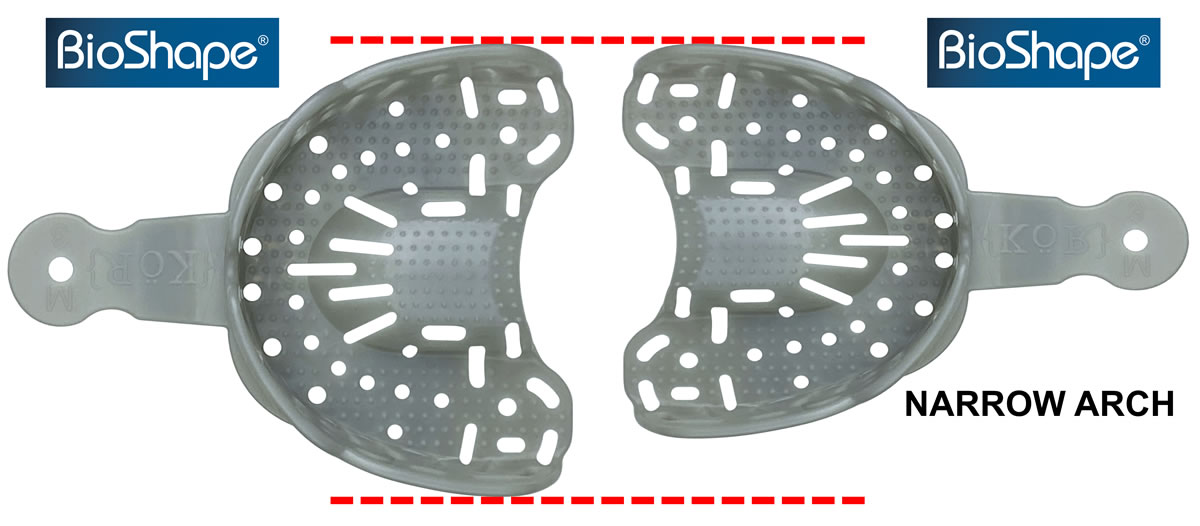
24
COMFORTABLE ROUNDED CORNERS & EDGES
All of the corners of BioShape trays are widely rounded so they do not impinge on, or poke, the patients’ soft tissue. Compare this to most other impression trays.

25
ADDITIONAL FARE OF POSTERIOR FLANGES
Dr. Kurthy slightly increased the flare of the posterior facial flanges of the upper & lower trays outward for easier seating of the trays & accommodation of patients with a bulbous gingival shape.

26
REDUCTION OF IMPRESSION FLOW INTO PATIENT’S THROAT
As you see, holes have not been placed in the top of the palate. If you’re using a 2-step impression technique, after the first step base impression, a cap of impression material may be easily cut & removed from the top portion of the palate area to create a reservoir for excess wash impression material. During the wash impression, the wash material will accumulate in this reservoir, instead of being forced into the patient’s throat. This results in significantly more comfortable impressions with less gagging of the patient.
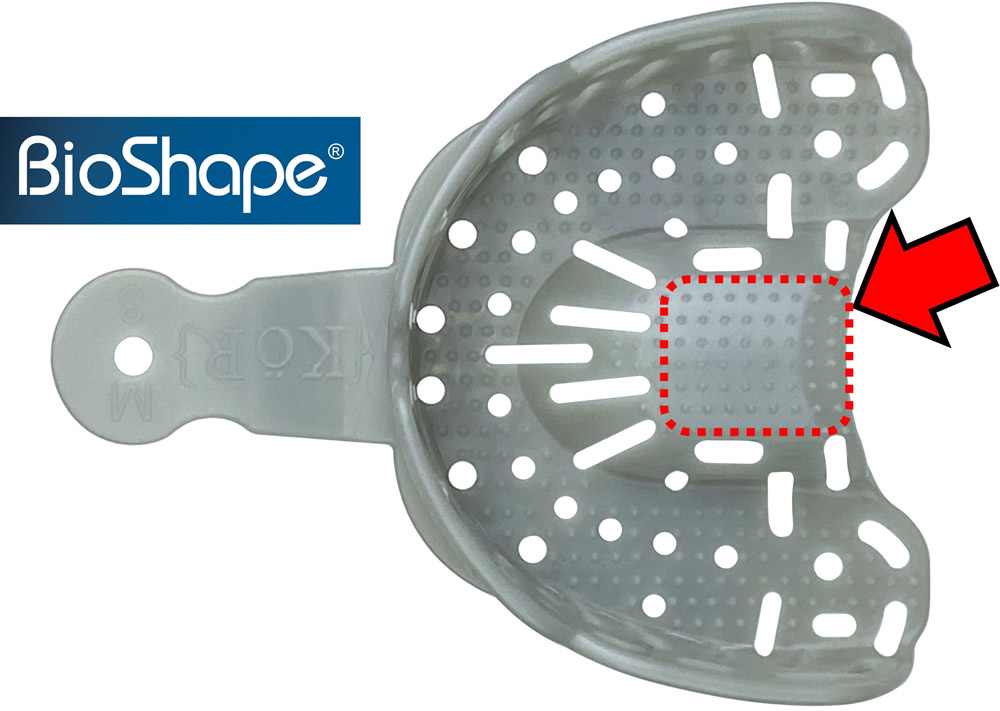
27
CUSTOMIZABLE
Considering the anatomic design of the BioShape trays, customizing is rarely needed. But it’s nice to know that these trays are easily customizable with a torch to accommodate patients with large tori, significantly malpositioned teeth, excessively wide arches, etc.
When designing & developing these KöR BioShape® Anatomic Impression Trays, Dr. Kurthy was confident they would make a big difference. But when he actually started taking impressions with these trays, the huge improvement really amazed even him. And every single beta tester dentist, & their staff members, have felt exactly the same way.
We’re sure that you’ll be delighted when you try them.


